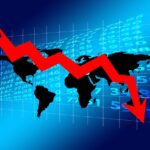Learning the wrong lessons from nature
A few years back I was sitting in the balcony of a famous game lodge in the Tsavo reserve, taking a short break while running some executive education seminars. I was gazing upon a watering-hole, against the magnificent backdrop of Mount Kilimanjaro, unveiled.
Suddenly, the bushes next to the watering hole parted, and a massive black bull buffalo appeared. I mean, this guy was huge. He headed for the watering-hole and salt-lick. I sat up, enthralled by the sight.
Soon, I noticed he wasn’t alone. Out of the bushes behind him emerged a procession of buffaloes, all of varying sizes, males, females and youngsters. It took a full twenty minutes for them all to come into view, and I eventually counted more than a hundred animals in the herd.
Here’s the thing. The big leader dude went to lick the salt to his heart’s content. He then went into the pool and rolled in the water. The other hundred or so members of his group waited patiently, and then, one by one, started lapping up some salt tentatively, from the edges of the lick. Then, ever so slowly, they entered the water. The big bull stayed in the middle of the pool. The rest clambered into one side, making sure they kept their distance from the boss, even standing on each other’s heads as they rolled in the mud.
The boss had his fill of the salt and water, and occupied at least fifty per cent of the pool. The other hundred underlings crowded into the remaining half of the pool.
Later that year I visited the CEO of a leading state corporation. The organization’s headquarters had two lifts. One was shared between two hundred or so staff members. the other elevator was kept reserved for the CEO, and had leather panelling. The CEO only bothered to show up to work a couple of times a week, but the lift was kept empty regardless.
That was when I concluded that all this proximity to nature may be doing us great harm in Africa. For I fear we look a little too closely at the behaviour patterns of wild creatures as our models for leadership. I fear we see that buffalo – and bull elephants and heavy-maned lions – and see leaders. We observe all the perks of the wild leader’s job – the biggest share of the spoils, unquestioned authority – and we mimic that in human endeavour.
Let’s stop to think for a minute. Why is that bull buffalo the leader? Who voted for him, which board of directors appointed him? We know the answer. The bull leads because he’s the biggest member of the herd. Period. He leads because no one dares take him on; and because the herd stands the best chance of survival if the big guy protects it against predators.
Leadership in the wild is fit for its context. Out there, sheer size and aggression matters. But that is not the context of the human being. We are given human consciousness for a reason – to rise above the existence of beasts. We are given higher thought, and the ability to be self-aware, so that we become more and do more.
Sadly, in too many nations and organizations, our leaders are no better than bull buffaloes. They become leaders because they are the most brutal, or have the biggest bank accounts, or have snatched the most resources. Not because they have any higher-order qualities like vision, empathy, integrity or expertise.
We suffer greatly for this, allowing rampaging bulls to lead us. Their attributes are not the ones we need in human endeavour. To understand what human leadership should look like, please join me on this page next Sunday.

Buy Sunny Bindra's new book
The X in CX
here »
Popular Posts
- The pause that saves usJune 8, 2025
- The first push is the hardestJune 1, 2025
- How to spot a real thinkerJune 15, 2025
- Built the app, forgot the flowJune 22, 2025
- How to ruin what you loveMay 25, 2025















